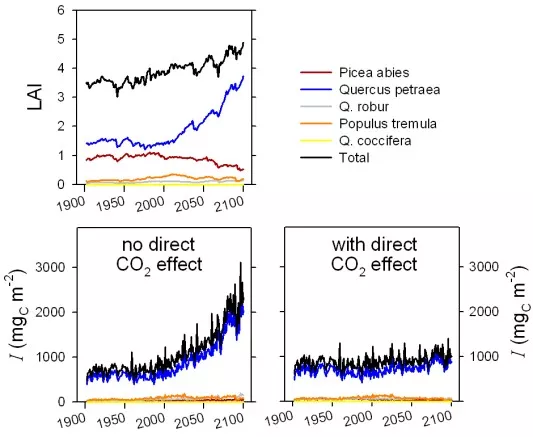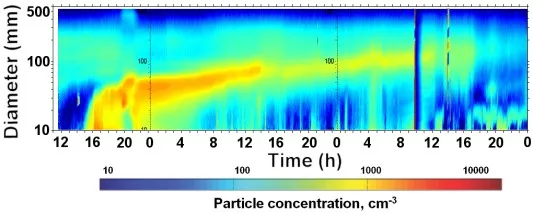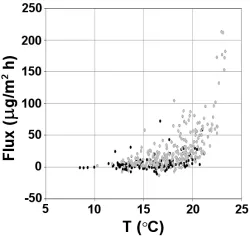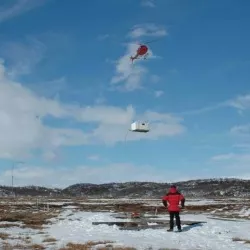Reactive trace gases
The terrestrial biota plays an important role in the regulation of atmospheric composition and climate. Surface albedo and energy partitioning are an established component of climate models. More recently, biogeochemical climate feedbacks through the terrestrial carbon cycle have become the focus of attention; a large proportion of the projected reduced global carbon sink at the end of the 21st century may be attributable to processes taking place on land. But likewise, an increasing number of studies demonstrate that, beyond CO2, atmospherically fast reactive substances that are emitted or consumed by the terrestrial biota, including by vegetation fires, also play a significant role for our understanding of the climate system.
Substances like biogenic volatile organic compounds (BVOC), the various nitrogen oxides, carbonaceous particles, ozone or methane act in the atmosphere either directly as greenhouse gases and aerosols, or as key precursors for greenhouse gases and secondary organic aerosol. Broad consensus exists on the need for a quantification of their regional sources and sinks, their link to the terrestrial carbon cycle and how they respond to climate and landcover/land use change.
For that reason dynamic global vegetation models are increasingly being developed to improve their capacity to simulate emissions of non-CO2 trace gases. This includes representation of the full terrestrial nitrogen cycle and hence emissions of nitrogen oxides, emissions of BVOC, accounting for wetlands and emissions of methane, and inclusion of fire as a naturally- or anthropogenically-caused episodic event.
Trace gas emission modelling is not only important for future chemistry-climate and chemistry-climate-feedback studies. Equally important is to account for past environments so as to improve Holocene calculations of terrestrial emissions which have an effect on, e.g., the atmosphere’s level of oxidants and thus methane lifetime and concentration, the preindustrial burden of O3 and hence its present anthropogenic radiative forcing, as well as estimates of the continental pristine SOA particle concentrations which affect cloud physics.
Activities at INES have concentrated in recent years on:
- measurements of soil, leaf and ecosystem BVOC emissions to investigate the processes that control these emissions, the variation that can be found with respect to vegetation compositions and to contribute data for model evaluation.
- measurements of aerosol particle and air ion size distribution and number concentration in clean-air environment to address the possible links to BVOC emissions.
- simulating BVOC and fire emissions from years to millennia in response to climate change and changes in atmospheric CO2 concentration
- investigating effects of vegetation composition on BVOC emissions
We have just started to also study effects of climate change on the ecosystem nitrogen cycle and we will increasingly include aspects of land cover/land management change in our analyses in the coming years.
Contact information
Department of Physical Geography and Ecosystem Science
Telefon +46 46 222 48 65
E-mail: thomas [dot] holst [at] nateko [dot] lu [dot] se





